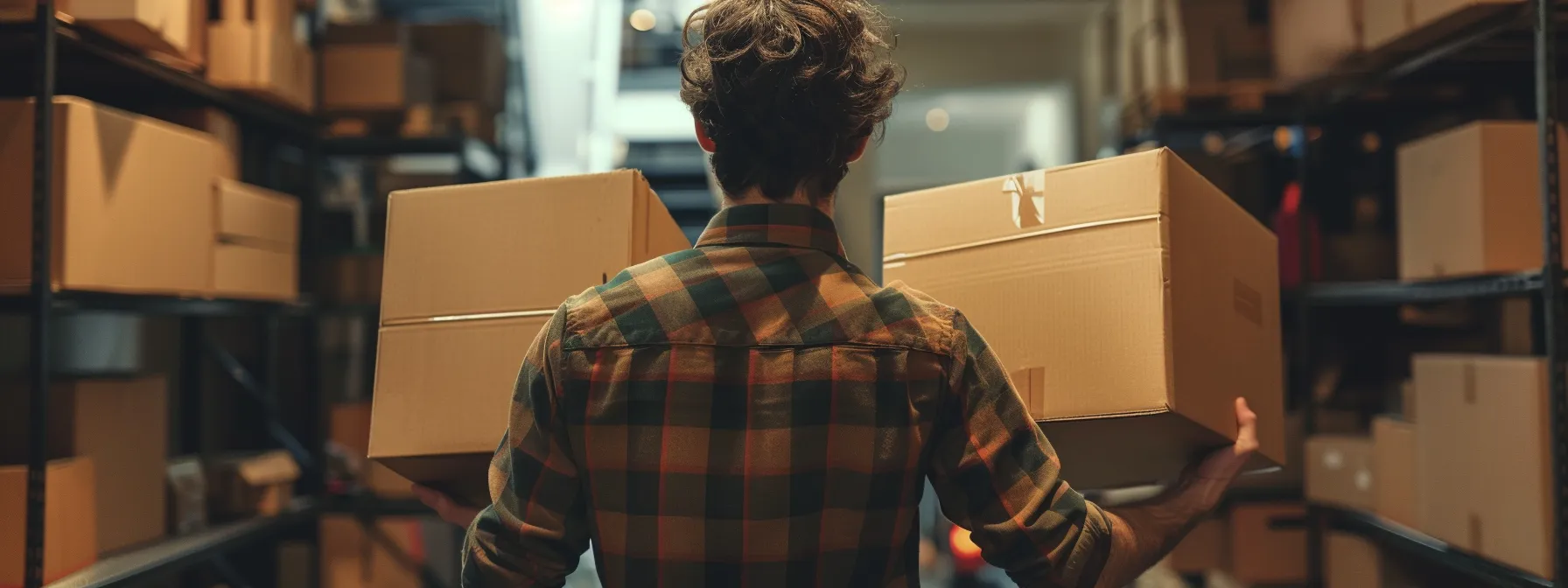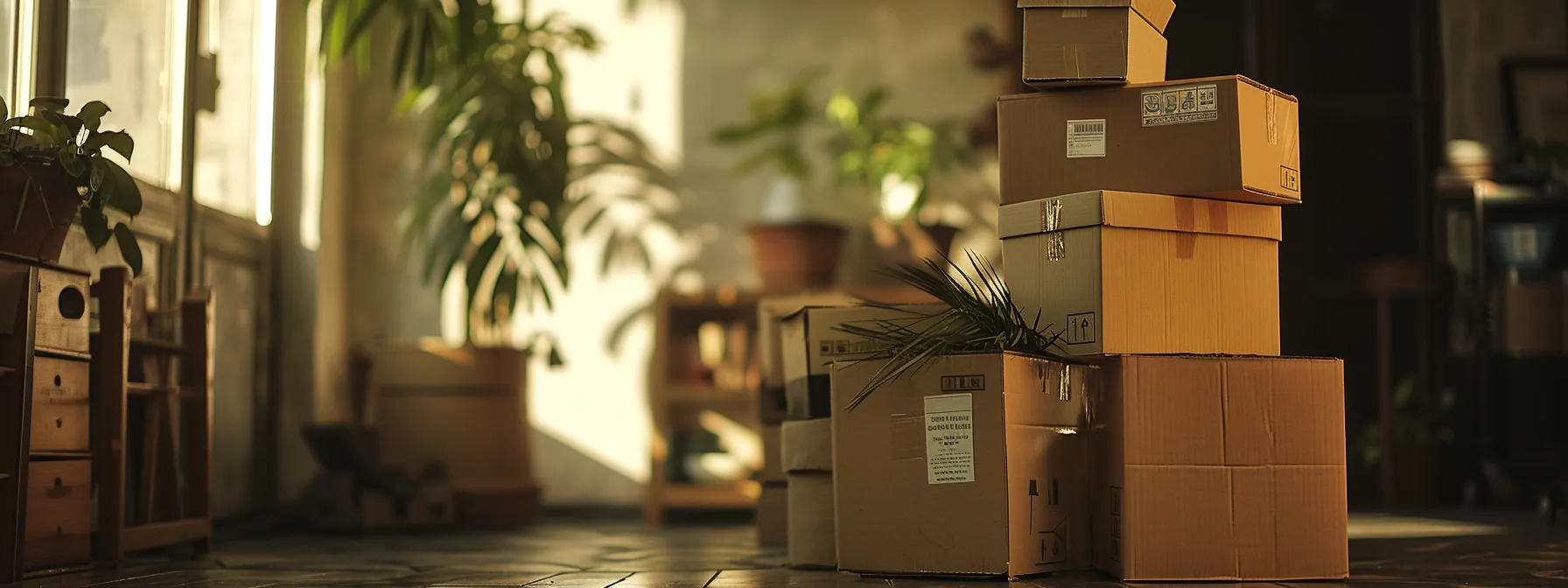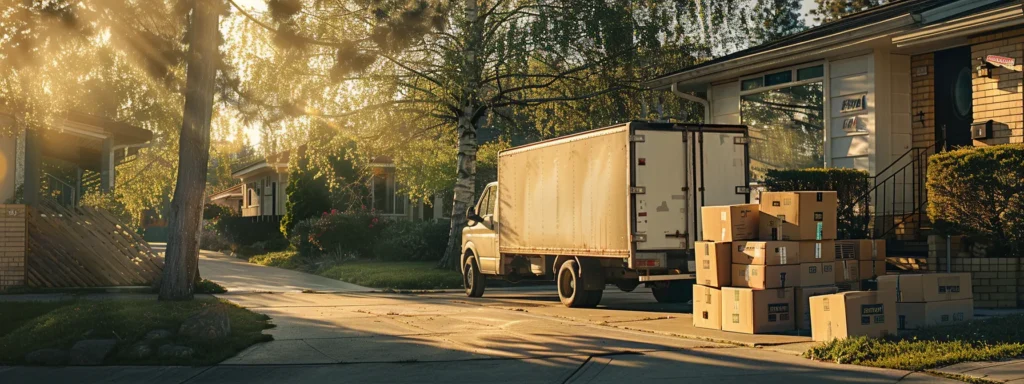Ultimate Interstate Moving Guide
- The Ultimate Checklist for a Smooth Interstate Move
- Planning Your Interstate Move Early
- Setting a Realistic Moving Timeline
- Budgeting for Your Cross-Country Relocation
- Researching Your New Community and State Laws
- Creating a Comprehensive Inventory List
- Scheduling Key Dates and Appointments
- Selecting a Trustworthy Interstate Moving Company
- Gathering and Comparing Multiple Quotes
- Verifying Licenses and Insurance Coverage
- Reading Reviews and Checking References
- Understanding the Terms of the Moving Contract
- Watching Out for Common Moving Scams
- Organizing and Packing Your Belongings Efficiently
- Decluttering and Donating Unwanted Items
- Acquiring Quality Packing Supplies
- Labeling Boxes for Easy Unpacking
- Protecting Fragile and Valuable Items
- Preparing an Essentials Box for Immediate Needs
- Managing Important Documents and Notifications
- Updating Your Address With Relevant Institutions
- Transferring Utilities and Home Services
- Securing Personal and Legal Documents
- Handling Medical and School Records Transfers
- Preparing Documentation for Vehicles and Pets
- Preparing for a Smooth Moving Day
- Confirming Details With Your Movers
- Ensuring Clear Access for the Moving Truck
- Preparing Large Appliances and Furniture
- Conducting a Final Walkthrough of Your Home
- Keeping Emergency Supplies on Hand
- Settling Into Your New Home Successfully
- Unpacking Strategically and Setting Up Essentials
- Inspecting Your Items for Any Damage
- Connecting Utilities and Setting Up Services
- Exploring Your New Neighborhood
- Registering Your Vehicle and Updating Licenses
The Ultimate Checklist for a Smooth Interstate Move
Moving to a new state can be a daunting task, especially when it comes to organizing your household goods and managing costs. Did you know that an overwhelming number of people underestimate their moving fees? In this checklist, I will guide you through essential steps such as planning your interstate move early, selecting a trustworthy moving company, and preparing for a smooth moving day. By following this guide, you’ll streamline your home moving process and minimize the stress associated with the transition, allowing you to focus on settling into your new environment. Let’s jump in and tackle those moving needs together!
Planning Your Interstate Move Early

When planning your interstate move, it’s essential to establish a realistic timeline and budget for your cross-country relocation. I recommend researching your new community and understanding relevant state laws to ease the transition. Create a comprehensive inventory list to keep track of your belongings and schedule key dates and appointments to ensure a smooth moving process. With our white glove moving services, you can receive a free quote that emphasizes our commitment to exceptional customer service and logistics management.
Setting a Realistic Moving Timeline
Setting a realistic moving timeline is crucial for a successful interstate move. I recommend starting your planning process at least two to three months in advance, allowing ample time to research moving companies and their licensing requirements. By mapping out essential tasks, such as booking your movers and organizing your packing schedule, you can significantly alleviate the stress that often accompanies relocations.
| Task | Timeline |
|---|---|
| Research moving companies | 8-12 weeks before |
| Book your movers | 6-8 weeks before |
| Start packing | 4-6 weeks before |
| Change of address | 2-4 weeks before |
| Final preparations | 1 week before |
With this timeline in mind, you’ll find that planning your interstate move becomes much more manageable.
Budgeting for Your Cross-Country Relocation
Budgeting for your cross-country relocation is a vital step that ensures a smooth moving experience. I suggest considering costs associated with long distance movers, which may include packing supplies like crates and additional fees for services. Furthermore, hosting a garage sale can be a practical way to declutter, allowing you to reduce moving costs while also earning some extra cash. If you’re looking at reputable options, international van lines can provide comprehensive estimates, helping you to create a detailed budget that suits your needs.
Researching Your New Community and State Laws
Researching your new community and understanding state laws are vital steps when you move interstate. I found that familiarizing myself with local regulations can help avoid unpleasant surprises, such as pet restrictions or zoning laws. Additionally, creating an inventory of your belongings and knowing the weight of your items can assist in complying with any moving permits or regulations that may apply in your new area, ensuring a seamless transition into your new home.
Creating a Comprehensive Inventory List
Creating a comprehensive inventory list is an essential step in your interstate moving process. I recommend documenting each item you plan to take with you, as it not only helps keep track of your belongings but also assists in ensuring that all items are accounted for during the move. Additionally, utilizing well-regarded resources like the United States Department of Transportation can guide you in understanding the regulations related to moving, while reputable state moving companies such as Allied Van Lines focus on customer satisfaction and have a strong reputation for reliability.
- Begin by listing all major categories of items, such as furniture, appliances, and personal belongings.
- Note the condition and value of each item to assist with insurance if needed.
- Consider utilizing inventory apps to streamline the process and ensure accuracy.
- Keep a copy of the inventory with your essential documents on move day.
Scheduling Key Dates and Appointments
Scheduling key dates and appointments is a critical part of planning my interstate move. I prioritize creating a timeline that includes essential tasks such as finalizing my insurance policy, which protects my belongings during the move. Additionally, I ensure that I communicate with my broker to align on moving dates and any necessary details, while also allocating time for organizing my possessions by following the Marie Kondo method. This approach not only helps me declutter but also lends itself to timely recycling of items I no longer need, reducing stress as the moving day approaches.
You’ve laid the groundwork for your interstate move. Now, it’s time to find a company you can trust to carry your life to a new place.
Selecting a Trustworthy Interstate Moving Company

Selecting a trustworthy interstate moving company is crucial for a seamless moving experience. I gather and compare multiple quotes to assess my options, while also verifying licenses and insurance coverage to protect my belongings during transport. Reading reviews and checking references helps me gauge the reliability of removalists, and understanding the terms of the moving contract ensures I know what to expect. I also stay vigilant against common moving scams that can jeopardize my move.
Gathering and Comparing Multiple Quotes
Gathering and comparing multiple quotes from various interstate moving companies is a fundamental step in managing my interstate moving costs effectively. I always examine each contract closely to ensure there are no hidden expenses that could impact my budget later on. By comparing quotes, I can assess the value offered across different companies and make an informed decision that best protects my property during the move.
Verifying Licenses and Insurance Coverage
Verifying licenses and insurance coverage is vital in selecting a trustworthy interstate moving company. As someone who has navigated the moving industry, I emphasize the importance of choosing a licensed mover, as this not only ensures compliance with federal and state regulations but also adds a layer of protection for your cargo. I recommend checking the Federal Motor Carrier Safety Administration (FMCSA) website to verify a company’s license and insurance status, as well as reading customer reviews for insight into their reliability and handling of distance moves.
| Action Item | Details |
|---|---|
| Check License | Verify with FMCSA for compliance and legal status. |
| Review Insurance | Ensure adequate coverage for your cargo during transport. |
| Read Reviews | Glean insights from past customers to gauge reliability. |
| Ask Questions | Inquire about policies and procedures in case of damage or loss. |
Reading Reviews and Checking References
Reading reviews and checking references is fundamental when choosing a reliable interstate moving company. I find that firsthand accounts from previous customers provide invaluable insights into the professionalism and reliability of the interstate movers I am considering. By focusing on specific feedback regarding their experiences, such as adherence to a fixed rate pricing structure or how well the moving company handles vehicles, I can better evaluate my options and make an informed decision for a smooth move.
Understanding the Terms of the Moving Contract
Understanding the terms of the moving contract with your interstate moving company is essential to avoid any unexpected surprises. I always take the time to read through the contract thoroughly, paying particular attention to sections that outline responsibilities in case of damage, the timeline for delivery, and details regarding arbitration in the event of disputes. Knowing these terms ensures I am well-informed about the legal aspects and potential costs associated with moving interstate, ultimately leading to a smoother transition.
- Review all terms in the moving contract.
- Pay attention to potential arbitration clauses.
- Understand your rights regarding damage and delivery timelines.
- Be aware of the cost of living differences that may affect your budget.
Watching Out for Common Moving Scams
Watching out for common moving scams is essential when selecting a trustworthy interstate moving company. I’ve encountered various schemes where companies provide a low estimate over the phone without inspecting my belongings, only to demand significantly higher fees later. The best tips I can offer include verifying the company’s telephone number and business address to ensure you’re dealing with a legitimate mover, like Allied, known for their reliable removals. Always be cautious of companies that request large deposits upfront or lack proper customs documentation; these can be red flags that signal potential fraud.
With a reliable moving company by your side, the weight of the journey ahead feels lighter. Now, let’s turn our attention to how to pack your belongings with purpose and precision, making every item count.
Organizing and Packing Your Belongings Efficiently

I focus on several key areas when organizing and packing for moving day. First, I declutter and donate unwanted items to streamline the process and reduce moving costs. Next, I acquire quality packing supplies to ensure everything is well-protected. I always label boxes for easy unpacking, protect fragile and valuable items carefully, and prepare an essentials box to address immediate needs as soon as I arrive. This structured approach helps make my move with van lines as efficient as possible.
Decluttering and Donating Unwanted Items
Decluttering and donating unwanted items is an essential step in preparing for my interstate move. I take the time to go through each room, documenting what I no longer need and separating those items for donation or recycling. Not only does this process improve accessibility in my new home, but it also reduces the number of boxes I have to pack, minimizing the use of packing materials like bubble wrap for fragile items. When working with moving companies, such as North American Van Lines, I ensure I communicate my need for careful handling of remaining items while addressing any concerns about large donations that need attention.
| Action Item | Description |
|---|---|
| Document Items | Make a list of items to keep, donate, or discard. |
| Sort and Organize | Go through belongings room by room for efficiency. |
| Contact Local Charities | Identify organizations that accept donations in my area. |
| Schedule Pick-Up | Arrange for pick-up of larger donated items if needed. |
Acquiring Quality Packing Supplies
Acquiring quality packing supplies is crucial for protecting your belongings during an interstate move. I always prioritize investing in sturdy boxes, particularly for fragile and valuable items like antiques, to prevent damage. Additionally, I often compare prices from companies such as American Van Lines and North American Van Lines to ensure I’m getting the best value while meeting the standards set by the Federal Motor Carrier Safety Administration. Sourcing reliable packing materials not only facilitates a smoother moving process, but also provides peace of mind that my possessions will arrive safely at their new destination.
Labeling Boxes for Easy Unpacking
Labeling boxes for easy unpacking is a crucial step in my interstate move preparation. I always ensure that each box is clearly labeled with its contents and the room it belongs in, reducing the risk of confusion upon arrival. This simple yet effective method minimizes the chances of damages since I can prioritize unpacking essentials first; it ensures I know exactly where everything is during the moving process, which is particularly useful if I’m dealing with a new landlord who needs to assess the condition of the property immediately.
| Box Labeling Method | Description |
|---|---|
| Room Identification | Label each box with the specific room it belongs in (e.g., Kitchen, Bedroom). |
| Contents Overview | Include a brief description of the contents for quick reference (e.g., “Dishes” or “Clothing”). |
| Prioritization Tags | Mark boxes as “Essential” or “Priority” to unpack them first, especially for necessary items needed on arrival. |
Protecting Fragile and Valuable Items
Protecting fragile and valuable items during an interstate move is a top priority for me. I always ensure that I use appropriate packing materials, like bubble wrap and sturdy boxes, to safeguard my delicate possessions. Additionally, I consider investing in moving insurance or liability insurance, which provides added peace of mind by covering potential damage during transport. Understanding how valuation works can also help me gauge how much coverage I need, ultimately ensuring that I minimize any risk of complaint regarding lost or damaged items.
| Item Type | Packing Method | Recommended Insurance |
|---|---|---|
| Glassware | Wrap each piece in bubble wrap and place in a box with dividers. | Moving Insurance |
| Antiques | Use soft blankets and secure in a padded box. | High-Value Valuation |
| Electronics | Keep original packaging if possible or use foam to protect screens. | Liability Insurance |
Preparing an Essentials Box for Immediate Needs
Preparing an essentials box for immediate needs is a crucial step in making my interstate move as seamless as possible. I include important items such as toiletries, medication, vital documents, and a change of clothes to ensure I have everything I need upon arrival. Additionally, I make sure to incorporate my motor vehicle documents, a mobile app for navigation, and essential contacts, all while keeping in mind any specific policies regarding Long-DistanceMoving Services or Expedited Long-Distance Moving I may encounter.
| Essential Item | Description |
|---|---|
| Toiletries | Items needed for personal hygiene immediately after the move. |
| Medication | Any necessary prescription or over-the-counter medicines. |
| Important Documents | Such as IDs, insurance policies, and motor vehicle information. |
| Change of Clothes | A fresh set of clothes to wear after the move. |
| Mobile App | Apps for navigation or managing moving tasks. |
Once everything is packed neatly, the next step looms: your important papers. These documents deserve your full attention, ensuring you stay on top of what matters most as you prepare for the move.
Managing Important Documents and Notifications

Managing important documents and notifications is key during interstate moves. I prioritize updating my address with relevant institutions, transferring utilities and home services, and securing personal and legal documents. Additionally, I handle medical and school record transfers, ensuring my vehicles and pets have the necessary documentation. These steps help streamline my transition and keep everything organized.
By addressing these areas, I ensure a smoother experience that minimizes disruptions. I always refer to the FMCSA Official Site for compliance and update my real estate agent on my move, allowing for a seamless shift from local moves to my new home.
Updating Your Address With Relevant Institutions
Updating your address with relevant institutions is a key step in my interstate moving process. I make sure to inform my estate agent about my new address so they can assist with my renting needs. By doing thorough research on which organizations to contact, I can effectively keep my records accurate and ensure that important communications reach me without delay, providing me with the necessary knowledge to stay organized during this transition.
Transferring Utilities and Home Services
Transferring utilities and home services is a crucial step in my interstate moving process. I make it a priority to contact my current providers at least two weeks before my move to schedule service cancellations. At the same time, I reach out to new providers at my destination to set up accounts in advance, ensuring a seamless transition without interruption to essential services like electricity, gas, and water. Keeping track of any fees or cash deposits required during this process helps me effectively manage my moving budget and avoid unexpected expenses.
Securing Personal and Legal Documents
Securing personal and legal documents during my interstate move is a crucial step that I never overlook. I prioritize gathering important documents such as passports, birth certificates, and medical records, ensuring they are organized in a dedicated folder that stays with me during the move. This way, I avoid unnecessary delays or complications that can arise from misplaced paperwork, especially when I need to update my information with schools, medical providers, or government agencies in my new location.
Handling Medical and School Records Transfers
Handling the transfer of medical and school records is essential when relocating interstate. I make sure to contact my child’s school and my healthcare providers well in advance to request copies of these records, ensuring a smooth transition into new institutions. Keeping these documents organized allows me to present them easily when enrolling my child in a new school or establishing care with a new doctor, helping to minimize any disruption in my family’s routine:
- Contact your child’s current school to request academic records.
- Reach out to healthcare providers for copies of important medical documents.
- Keep all records in a dedicated folder for easy access during your move.
Preparing Documentation for Vehicles and Pets
Preparing documentation for my vehicles and pets is an essential aspect of my interstate move. I always make sure to gather all necessary paperwork, such as vehicle registration, proof of insurance, and pet vaccination records. Keeping these documents organized and accessible not only ensures compliance with new state regulations but also helps me settle my family’s needs quickly, whether I’m enrolling my dog in a new vet clinic or updating my vehicle‘s registration after the move.
With the important papers in order, you’re ready for the next step. Preparing for moving day is where the real journey begins, and it’s time to make it count.
Preparing for a Smooth Moving Day

To ensure a smooth moving day, I focus on several key tasks. First, I confirm all details with my movers to ensure everyone is on the same page. Then, I ensure clear access for the moving truck, which is essential for an efficient loading process. Preparing large appliances and furniture is another crucial step, followed by conducting a final walkthrough of my home to check for any remaining items. Lastly, I keep emergency supplies on hand, just in case I need quick access to essentials during the move.
Confirming Details With Your Movers
Before moving day arrives, I make sure to confirm all details with my movers. I find it essential to double-check the scheduled time, the address of my new home, and any specific requirements they might have for access or parking. This proactive step not only minimizes the chances of last-minute surprises but also allows me to address any questions or concerns that may arise, ensuring my interstate move remains as seamless as possible.
Ensuring Clear Access for the Moving Truck
Ensuring clear access for the moving truck is a critical part of my preparation for a smooth interstate move. I always evaluate the parking situation at both my current and new locations, taking note of any restrictions that could impede the truck’s arrival. This might mean communicating with my neighbors or even reserving a parking spot ahead of time to prevent any last-minute hurdles on moving day:
- Check for parking regulations in your area.
- Remove any obstacles like vehicles or outdoor furniture.
- Consider notifying your neighbors about the moving day to ensure cooperation.
Preparing Large Appliances and Furniture
Preparing large appliances and furniture for an interstate move is an essential step that I never overlook. I ensure that all appliances, such as refrigerators and washers, are defrosted and cleaned days before moving day to prevent leakage and odors. For heavier furniture pieces, I disassemble items like beds and tables to make them easier to transport, and I use moving blankets for added protection against scratches. This preparation not only helps protect my belongings but also makes the loading process more efficient, allowing my movers to focus on safe handling during transit.
Conducting a Final Walkthrough of Your Home
Conducting a final walkthrough of my home is an essential step that I never skip before moving day. This gives me the opportunity to check every room, ensuring that nothing is left behind, including personal items and essential documents. I also make sure to look in closets, cabinets, and behind doors, as I’ve found that small items often get overlooked. Additionally, a final inspection allows me to confirm that everything is ready for my movers, ultimately contributing to a smooth interstate move and a seamless transition into my new home.
Keeping Emergency Supplies on Hand
Keeping emergency supplies on hand is a crucial part of my moving day preparations. I ensure I have items like bottled water, snacks, a first aid kit, and essential tools, ensuring I can address unexpected situations. By being ready for anything, from a sudden need for a screwdriver to a snack break, I find that my moving experience is less stressful and allows me to focus on the task at hand. This simple step can make a significant difference in keeping everyone comfortable and calm throughout the day.
The moving truck pulls away, leaving behind familiar sights and sounds. Ahead lies a new space, filled with promise and the chance to create a fresh start.
Settling Into Your New Home Successfully

Unpacking strategically and setting up essentials is key to making your new house feel like home. It’s also important to inspect my items for any damage that may have occurred during transit. Connecting utilities and setting up services ensures a comfortable living environment, while exploring my new neighborhood helps me integrate into the community. Finally, I’ll take care of registering my vehicle and updating licenses to comply with local regulations.
Unpacking Strategically and Setting Up Essentials
Unpacking strategically is an essential part of settling into my new home after an interstate move. I focus on prioritizing key areas, such as the kitchen and bathroom, to ensure that I can quickly access essential items like cookware and toiletries. As I unpack, I maintain an organized approach by grouping similar items together, which not only speeds up the process but also helps me locate things easily later on, setting the stage for a smooth transition into my new environment:
| Room | Priority Items |
|---|---|
| Kitchen | Cookware, utensils, and essential appliances |
| Bathroom | Toiletries, towels, and cleaning supplies |
| Bedroom | Bedding and clothing for the first few nights |
| Living Room | Electronics and necessary furniture |
Inspecting Your Items for Any Damage
Inspecting my items for any damage is a critical step immediately after arriving at my new home. I take the time to carefully check boxes and furniture, looking for signs of wear or breakage that may have occurred during the move. Documenting any damage with photos and noting it on my inventory list helps me file a claim with the moving company if necessary, ensuring that my belongings are protected even after the move is complete.
Connecting Utilities and Setting Up Services
Connecting utilities and setting up services in my new home is one of the first tasks I handle to ensure comfort and convenience. I make a list of essential services like electricity, gas, water, internet, and trash collection, reaching out to providers at least two weeks before my move-in date to arrange for timely activation. This proactive approach not only helps avoid interruptions in service when I arrive but also allows me to settle in quickly and get comfortable in my new environment.
Exploring Your New Neighborhood
Exploring my new neighborhood is one of the most rewarding aspects of settling into a new home. I recommend taking a few hours to walk around and familiarize myself with the local area, checking out nearby parks, grocery stores, and dining options. It’s also beneficial to connect with neighbors and ask about community events or resources; this helps build a sense of belonging and provides insights into what makes the neighborhood special. By getting to know the area, I can quickly identify what amenities are available and make my new house feel like home.
| Exploration Tip | Action |
|---|---|
| Visit Local Parks | Take a leisurely stroll or have a picnic to enjoy the outdoors. |
| Locate Grocery Stores | Find the nearest grocery stores for convenient shopping. |
| Explore Restaurants | Sample local dining options to discover favorites. |
| Engage with Neighbors | Introduce myself and ask about community gatherings. |
Registering Your Vehicle and Updating Licenses
Registering my vehicle and updating licenses is a vital part of settling into my new home after an interstate move. I make it a priority to visit the local Department of Motor Vehicles (DMV) as soon as possible to handle these changes, ensuring that I have all required documentation, such as proof of residency and identification. By taking care of this promptly, I avoid any potential fines or complications related to driving legally in my new state, allowing me to enjoy my new surroundings without worry.




